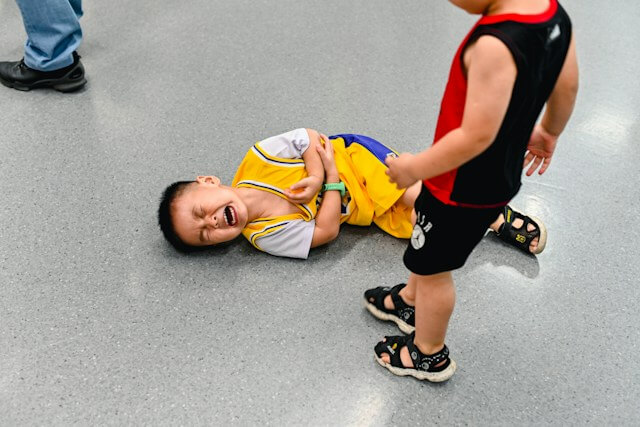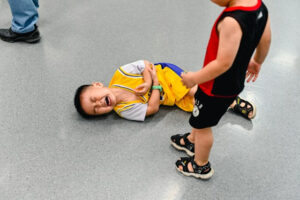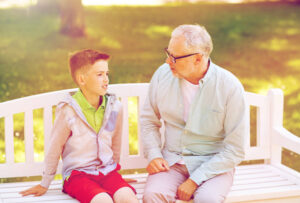
Table of Contents
Autism Spectrum Disorder (ASD) is a complex developmental condition that affects communication and behavior. Children with autism may exhibit challenging behaviors, including aggression or self-harm. One of the most common forms of aggression is hitting. However, it’s crucial to remember that every child’s behavior is unique, and what works for one might not work for another. Here are some strategies that can help manage this behavior, especially when utilizing ABA therapy in home. This personalized approach ensures that interventions are tailored to the specific needs and environment of the child.
What is the function of hitting in children with autism?
Children with autism may exhibit behaviors such as hitting for a variety of reasons. Here are some potential functions or causes:
Communication: Sometimes, children with autism resort to hitting when they have difficulty expressing their needs or emotions verbally. It can be a way for them to signal discomfort, frustration, or desire for something.
Sensory Overload: Autism can make individuals more sensitive to sensory stimuli. If they’re overwhelmed by sounds, lights, or social interactions, they might hit as a response to this overload.
Seeking Attention: Hitting can also be a way for the child to get attention, especially if it results in responses from others.
Avoidance or Escape: The child might use hitting as a strategy to avoid a task or situation that they find uncomfortable or distressing.
Self-Stimulation: In some cases, the physical sensation of hitting might be soothing or pleasurable to the child, a behavior often referred to as ‘stimming’ in the context of autism.
1. Understand the Triggers
The first step for parents in addressing any problematic behavior is understanding its triggers. Is your child hitting when they’re frustrated, scared, or overstimulated? Are there specific situations or individuals that provoke this behavior? Keep a journal of these incidents to identify patterns and triggers.
2. Use Calm, Clear Communication
Children with ASD often struggle with verbal communication skills. It’s essential to use clear, concise language when explaining why hitting is not okay. Use visual aids or social stories to help them understand better if necessary.
3. Teach Alternative Behaviors
Instead of merely telling your child what not to do, teach them what they should do instead. This could involve using words, pointing to a picture, or signing to express and communicate their feelings. Role-play scenarios can also be effective for teaching appropriate responses.
4. Create a Safe Environment
A safe and predictable environment can reduce anxiety and frustration, minimizing the likelihood of aggressive behaviors. This can mean maintaining regular routines, providing advance notice of changes, and creating quiet, calm spaces where your child can retreat when feeling overwhelmed.
5. Positive Reinforcement
Reward your child when they manage their frustrations without resorting to aggressive behavior or to hitting. This could be verbal praise, a favorite activity, or a small treat. Over time, this can help to reinforce alternative behaviors.
6. Seek Professional Help
If the hitting continues despite your best efforts, it might be time to seek professional help. A behavioral therapist or psychologist who specializes in autism can provide additional strategies and support.
Behaviors the Might Indicate that a Child with Autism is about to hit
Certain behaviors may serve as indicators or predictors that a child with autism might be on the verge of hitting. These can include:
Increase in Non-Verbal Cues: The child might exhibit heightened agitation, such as pacing, clenching fists, or sudden intense fixation on certain objects or individuals.
Verbal Outbursts or Changes in Tone: They may start yelling, using a louder voice, or their speech pattern might become rapid or disjointed.
Escape Attempts: If the child attempts to leave a situation abruptly or refuses to engage in an ongoing activity, it may be a sign of escalating stress that could lead to hitting.
Change in Facial Expression or Body Language: They might display signs of stress or frustration, such as furrowed brows, tightened jaw, or rigid posture.
Increased Self-Stimulatory Behavior: The child might increase their ‘stimming’ behaviors, like hand-flapping, rocking, or spinning, which could indicate rising anxiety.
It’s crucial to remember these are potential signs, and each child’s cues may vary based on their unique behavioral patterns. Recognizing these signs early can help caregivers or professionals intervene and potentially prevent an episode of hitting. Always consult a professional for personalized advice.
Remember, patience is key. It takes time for a parent and a child to learn new behaviors, especially if the old ones have been ingrained over time. Always approach your child with love, understanding, and compassion. With consistent effort and the right support, it’s entirely possible to manage aggressive behaviors in children with autism.
Disclaimer: This blog post is intended to be a general guide and does not replace professional medical advice. Always consult with a healthcare provider for personalized advice.
- Autism Routine Disruption in Adults: Coping Tips - July 16, 2024
- Autism and Obsession: An Overview - July 16, 2024
- Autism and Taking Clothes Off: Management Tips - July 16, 2024



